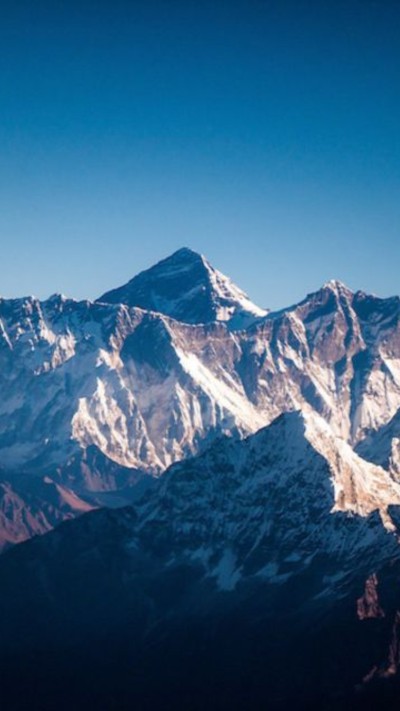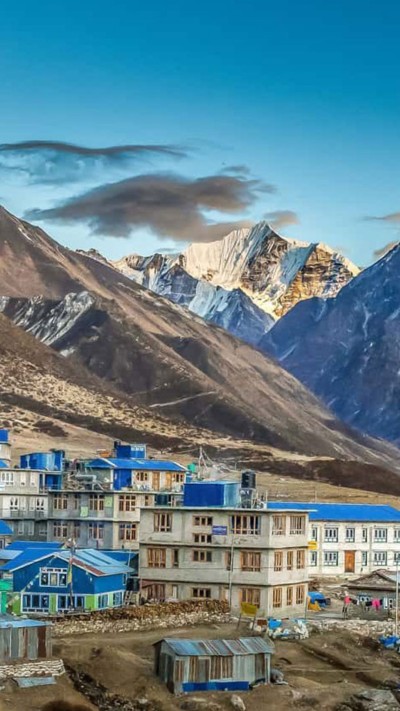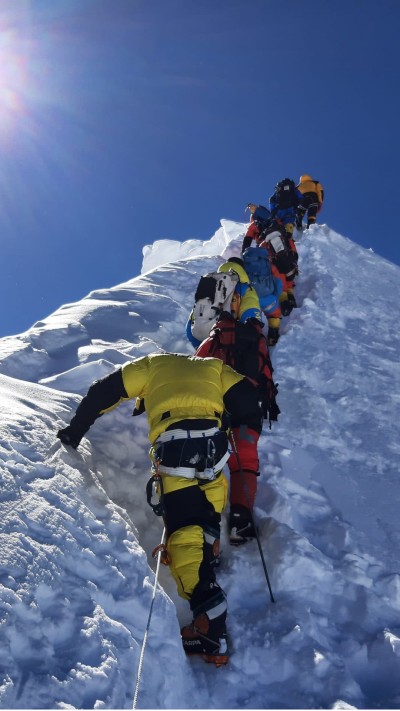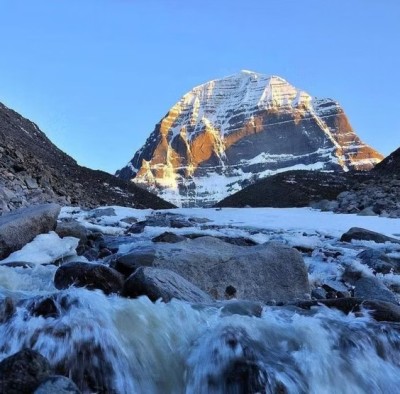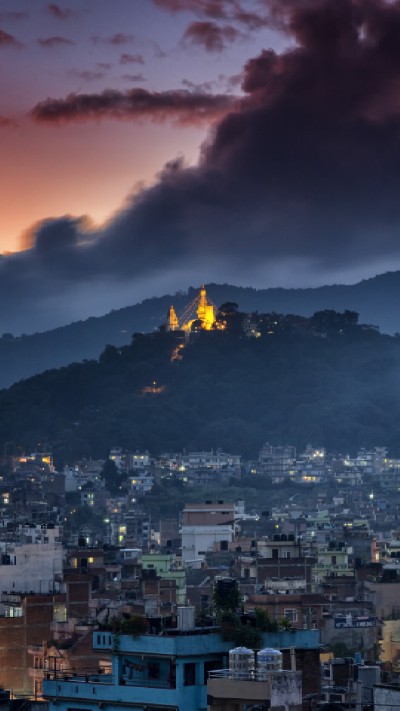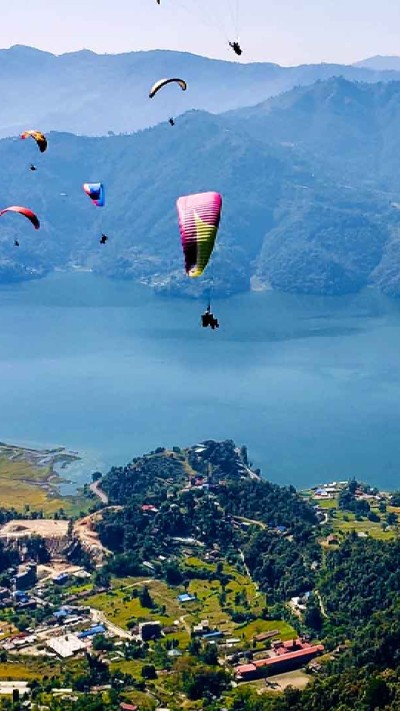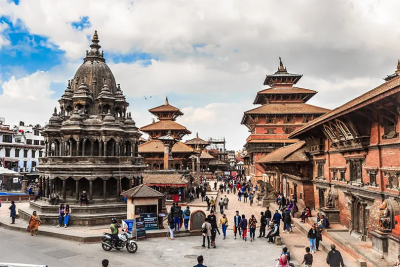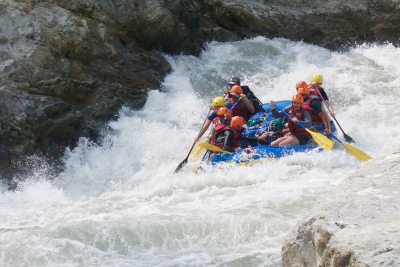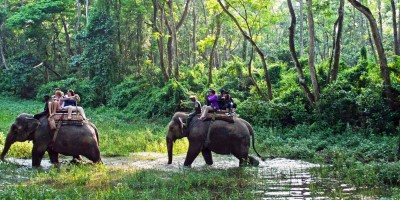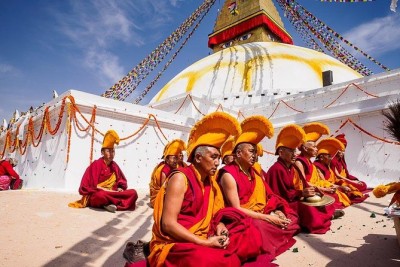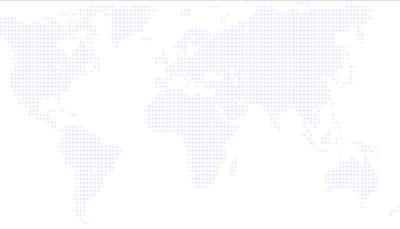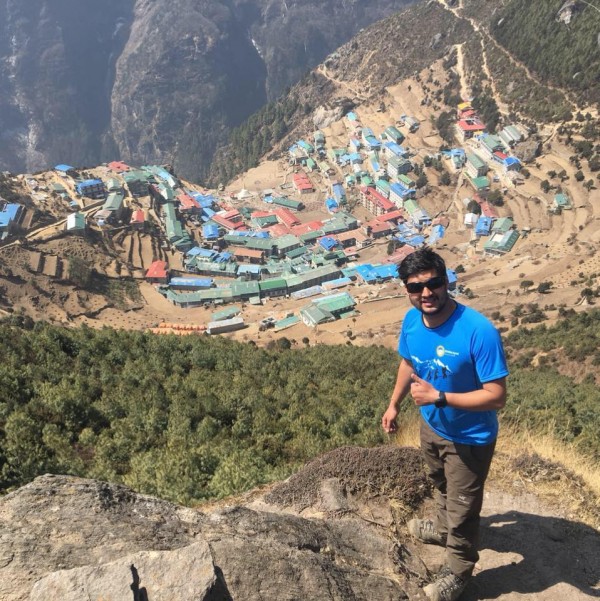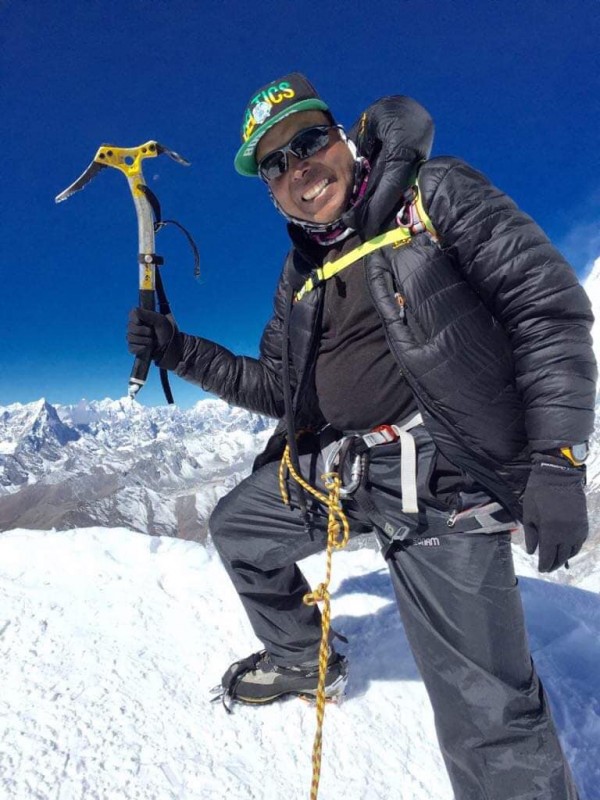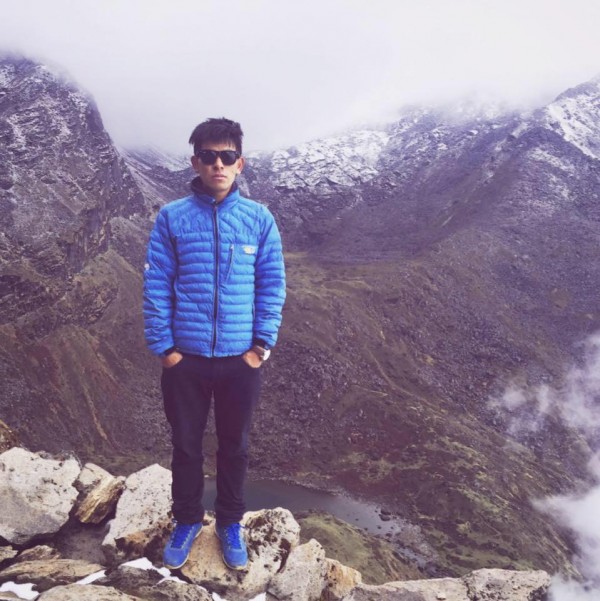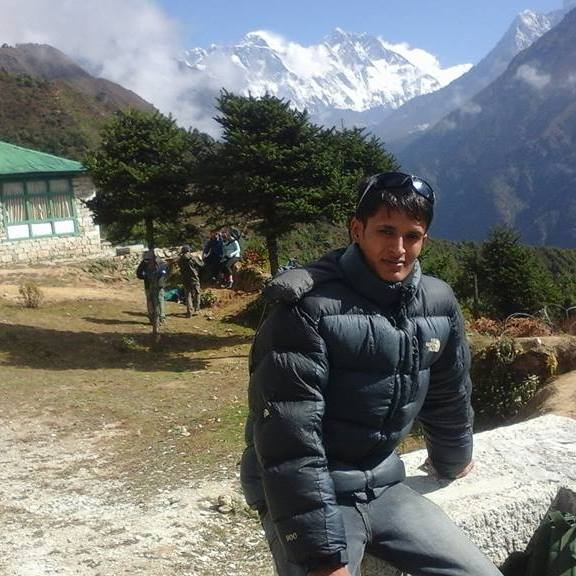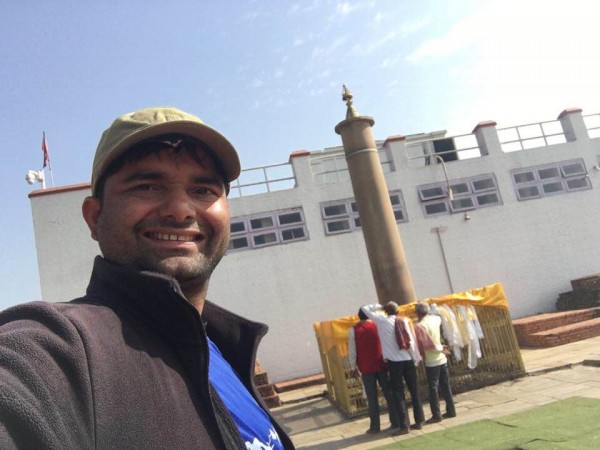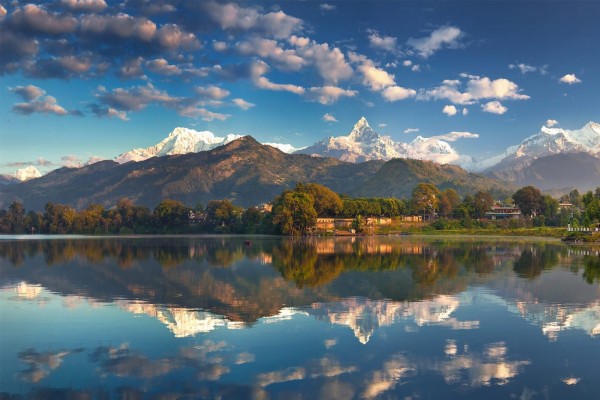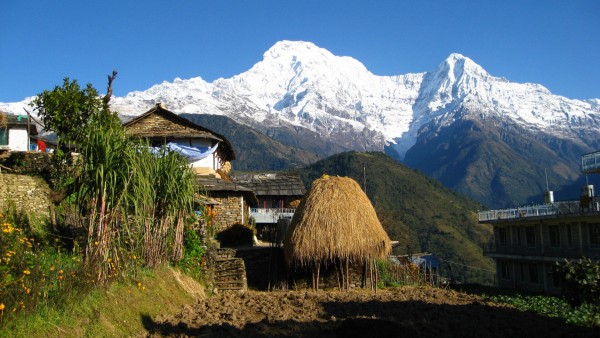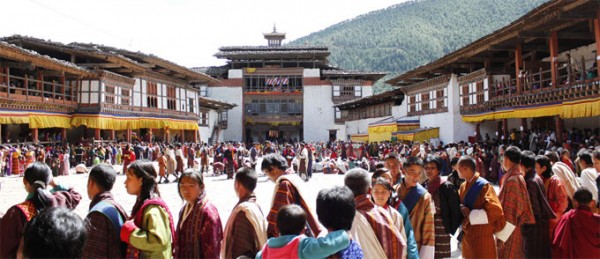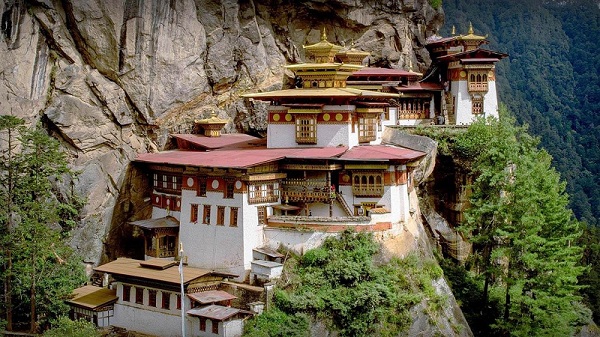Nepal, Darjeeling and Sikkim Tour
Region
Inter-country Tours
Duration
16 Days
Best Season
Any
Activity Per Day
5-6 Hours
Transportation
Tourist Bus, Private Car Or Plane Flight (optional)
Min Group Size
2 people
Overview
This package is very suitable for that traveler who wants to have both experiences of Nepal, Darjeeling, and Sikkim. Explore the mysterious culture of Kathmandu valley, visit the medieval art & culture, artistic palace, breathtaking scenery of sunrise over Himalaya as well as the magnificent mountain view including Mt. Everest.
This popular tour package takes you to important places in the west and east Sikkim such as the mystical Khechophalri lake popularly known as the Wishing Lake, Pemayangtse Monastery which is one of the oldest and most important monasteries, and the Rabdentse Palace ruins located near Pelling. Visit the Tiger Hill for sunrise, Padmaja Naidu Zoological Park where Snow Leopard and Red pandas are bred in captivity; The Yoga Choling Monastery with the Statue of Maitreya Buddha which happens to be the oldest monastery in Darjeeling, The famous tea gardens which produce some of the finest teas in the world.
Highlights
Guided tour of Kathmandu valley
Explore the beautiful city of Darjeeling
Visit the stunning tea garden
Get familiar with the culture, tradition and with the locals
Sightseeing tour around different culturally affluent places
Outline Itinerary ( 16 Days )
-
1
Arrival Kathmandu – transfer to hotel
Arrival in Kathmandu and transfer to the Himalayan Suite Hotel. Group Orientation meeting. In the evening welcome dinner with cultural program. (B.D)
-
2
Full day city tour Kathmandu
Patan Durbar Square is surrounded by a fascinating array of temples in different architectural styles. One of the Kathmandu Valley World Heritage Sites, Patan is well worth a visit. Its origins are clouded in mystery, but it has a long Buddhist history. For many centuries Patan’s importance eclipsed that of Kathmandu and by the 7th century, it was one of the major Buddhist centres of Asia, attracting pilgrims, scholars and monks from India, Tibet and China. Most of Patan’s magnificent architecture dates to the late Malla era (16th - 18th centuries).
Boudhanath Stupa is one of the holiest sites in Nepal. It holds utter importance, and faith not only from the perspective of Buddhism, but Hindus of Nepal pay their equal respect to this pious Buddhist site. The stupa is one of the UNESCO world heritages for Nepal and the place where the stupa is established; it used to be an ancient resting point for the Tibetan merchants for Nepal and India, where they would rest and perform their holy prayers. Ever since then and now, especially Tibetans but also Buddhist from all around the world regard Boudhanath Stupa as their ultimate holy destination. (B)
-
3
Kathmandu -Bhaktapur-Nagarkot one and half hour drive
Nagarkot, at an altitude of 2,175 meters above the sea level, is the most popular touristic destination out of the Kathmandu Valley. It is the favourite weekend gateway among those seeking Mountain View in comfort and quiet. At sunrise, the Himalayan range, stretching from Dhaulagiri in the west all the way past Everest to Kanchenjunga in the east, emerges from the darkness to greet the happy visitors with its awe-inspiring majesty and beauty.
For those wishing to stretch their legs and enjoy the fresh morning air, there are charming walking trails as well as a lookout tower from which the sights can be taken in. Among all the places for mountain viewing around Kathmandu Valley, Nagarkot is usually considered to be the best. The views go from Dhaulagiri in the west to Kanchenjunga in the east. On a clear day, you can see Mt. Everest (Sagarmatha). You can also see Manaslu (8,463m), Ganesh Himal (7,111m), and Langtang (7,246m). (B)
-
4
Kathmandu to Bhadrapur by Flight
You will be met by our office Executive who will assist you to board your vehicle to Gangtok (154 km / 5hrs). Check-in and overnight at Hotel. (B)
-
5
Gangtok
Go for half-day sightseeing covering Rumtek Monastery, Droul Chorten, Research Institute of Tibetology, Directorate of Handicraft & Handloom, Flower Show, Enchey Monastery & Nam Nam View Point. Overnight at Hotel. (B)
-
6
Gangtok
This is a day excursion to Tshangu Lake (departure in the morning). Situated at a height of 3,780 Mts. with an average depth of 50 ft. TheCool water of the Lake is perfectly attuned with the scenic beauty around. Return Back to Gangtok. Overnight at Hotel. (B)
-
7
Gangtok - Pemayantse
After Breakfast transfer from Gangtok to Pemayangtse (116 km / 05 hrs). via Sikkim Temi Tea Garden and on the way Rabangla arrive Pemayantse Check in hotel. The evening takes a pleasant walk enjoying the sunset over Mt. Khangchendzonga. Stay Overnight hotel (B)
-
8
Pelling
Today you go for a Full day sightseeing covering Rimbi Waterfalls, Rimbi Hydel Project, Khecheopari Lake & Kanchenjunga Falls. Back to Hotel for Lunch. After lunch, you cover Pemayangtse Monastery, Changay Falls, Singsor Bridge & Dentam Village (includes Alpine Cheese Factory). Overnight at Hotel. (B)
-
9
Pelling - Yuksom
After breakfast we drive to Yuksom (35 Km / 02Hrs) on way visit Khecheopalri Lake, Khecheopalri Lake is one of the sacred Buddhist mountain lakes wherever it is believed that whatever is wished in front of the lake comes true. Myth has it that when a leaf falls on the placid clear water surface is picked by a bird. A further drive takes you to Yuksom (the meeting place of three monks)- the first capital of Sikkim. This was the place where the first Chogyal (a ruling dynasty in Sikkim) was crowned. Overnight at Hotel. (B)
-
10
Yuksom
Early morning 35 minutes moderate walk to Dhubdi Monastery (built-in 1700 AD, the oldest monastery of Sikkim) and Tashi Namgyal (the stone throne for the first king). Overnight at Hotel. (B)
-
11
Yuksom
After breakfast today transfer to Kalimpong (85 Kms/ 4 Hrs). Check-in at Hotel. Evening visit to Flower Nurseries, Durbin Dara Hills & Durbin Monastery. OverNight at Hotel. (B)
-
12
Kalimpong
Here you do the sightseeing of Dello hills, Dr Graham’s Home, Flower Nurseries, Nature Interpretation Center and Durbin Dara Hills & Jang-Dong-Palriffo Brang. Overnight at Hotel. (B)
-
13
Kalimpong - Darjeeling
Transfer to Darjeeling (70 km / 3 hrs.) and toy train ride.Overnight at Hotel. (B)
-
14
Darjeeling
Early morning tour to Tiger Hills (at around 4 am) to view sunrise over Kanchenjunga Peak (subject to clear weather). On way back visit Ghoom Monastery, Batasia Loop. After breakfast visit to Padmaja Naidu Himalayan Zoological Park, Himalayan Mountaineering Institute (closed on Thursday), Tenzing & Gombu. Rock, Tibetan Refugee Self-Help Center (Closed on Sunday) & Tea Estate. Overnight at Hotel. (B)
-
15
Darjeeling – Bhadrapur airport
Darjeeling to Bhadrapur Airport 4hrs /145km. Morning Breakfast transfer from Darjeeling to Nepal border after complete immigration and proceeds for Bhadrapur Airport catch Kathmandu Flight. Overnight at Himalayan Suite Hotel (B)
-
16
After breakfast transfer to the airport for your departure. (B)
Include
- Airport pick up and drop
- Accommodation in Kathmandu- Himalayan Suite Hotel and in Hotel Himalayan Villa in twin sharing basis with breakfast
- Sightseeing tour in Kathmandu with tour guide
- Kathmandu to Nagarkot by private vehicle
- Welcome dinner with cultural program in Kathmandu
- Kathmandu –Bhadrapur –Kathmandu by flight
- All Transportation AC / Qulise, Innova / Xylo / Mini Tourist Bus
- Guide/ leader (Experienced Tour Guide will lead the tour).
- All monument fees, Permit arrangement, All taxes and VAT in Darjling ,Skkim
- All accommodation as Darjeeling, Gangtok, Pelling, Yuksom and Kalimpong in twin sharing With Breakfast
- Himalayan toy train ride in Darjeeling
Exclude
- Lunch and dinner during the trip
- Sightseeing entrance fee in Kathmandu (200 +250+1000)
- Expenses of personal nature expenses, travel insurance and anything not mentioned in the trip itinerary
In Nepal
Food and Accommodation
You will have comfortable accommodation in Kathmandu in the Himalayan Suite Hotel and Himalayan Villa Hotel in Nagarkot, on a twin sharing bed and breakfast basis.
While you will be enjoying varieties of delicacies in Kathmandu, and Nagarkot during your stay in an accommodation or eating outside in full-fledged cafes, restaurants, and diners, you will also have an ample opportunity to get healthy food varieties while on the tour in Nepal.
Please note that morning breakfast is included in the price however, lunch and dinner are not.
Travel insurance
We suggest taking out an insurance plan for your individual accountability, accidents, and illnesses during the service. Regarding the type of activity, you may be asked to show a certificate of insurance for help and support, sanitation, and search.
Personal Safety
Wherever you are your health and security are your responsibilities. In the city, the area is aware of scammers and touts. Outside the airport, or on the road, taxis are likely to charge more than normal. Pickpockets are active in cities and also in the mountains. Even if you are an experienced trekker or have good health and stamina, you don’t know the mountains of Nepal and hence, it is wise to keep up with your guide and stay close with your group.
Valuable items like gold or diamond chains, rings, bracelets are best not carried to the mountains and also keep your day pack with you safe. Your passport, permits, phone, cameras are supposed to be with you all the time. Keep the money you carry safely and securely.
Don't try to get too close to the animals or go to extra lengths for the photos. It is expected and is also for your safety that you travel with responsibility and sensibility.
As long as you are respecting local norms and culture and are open-minded towards the local community, you will be treated well and respected regardless of what gender, religion, and culture you are from.
This tour with HSJ
We are your completely flexible travel partner. Want to follow a different route? We have you covered. Have extra time in Nepal? Excellent! We have more add-on tours like Chitwan Jungle Safari, Cable Car ride to Chandragiri hills, Cooking and Yoga classes in Kathmandu, and so on. Would like to customize the trip? Well, why not? Give us your ideas and we will prepare a complete itinerary for you. Do you want to use different standards of accommodations than provided in the itineraries? Of course! You absolutely can. From your arrival until you depart, your wishes are our command. Feel free to make the request.
Also, check our other Days tours for add ons.
Last-minute booking
It is best to book in advance but for those who cannot, for whatever reason, make a last-minute reservation special arrangement for Himalayan Social Journey. In the case of a last-minute reservation, 100% tour payment will be approved within 24 hours. We try to operate a trek at any time but we are not liable for the delay in case of last-minute reservation, because of uncontrolled changes such as weather and the availability of accommodation.
Feedbacks
Throughout the years of business, we have always put the customer's feedback as our inspiration towards making our company a great travel partner. With many ups and downs, and good and not so good feedbacks we have reached where we are now. At the end of the trek, while you are with the crew during farewell dinner, we would appreciate it if you give us your valuable feedback, an account of good and bad experiences, recommendations, and also your honest rating to our trip advisor page.
Important Information
VISA INFORMATION
OVERVIEW
All foreign nationals entering India are required to possess a valid international travel document in the form of a national passport with a valid visa obtained from an Indian Mission or Post abroad.
All Individual visa seekers are requested to apply for the Indian Visa through Online application link , in order to make an application for getting the Indian visa.
The duly signed physical copy of the application form completed in all respect and submitted successfully, is to be submitted at the concerned Indian Visa Application Center (IVAC) or directly to Indian Mission/ Post, on the scheduled date of interview along with the requisite supporting documents. The instructions for filling the form and scheduling the appointment can be seen at Instructions for Online Visa Application. Important technical information for filling online Indian visa application can be referred at Technical Instructions.
The applicants are also requested to visit website of the Indian Mission concerned for detailed information about Indian visa.
ONLINE VISA APPLICATION
All Individual visa seekers are requested to apply for the Indian Visa through online application link. Or can apply by typing the URL: http://indianvisaonline.gov.in/visa/ in the address bar of web browser, in order to make an application for getting the Indian visa. In either case, no hand written application form will be accepted by any of the Indian Mission/ Post, where-ever online Visa facility has been implemented. The application form completed in all respect and submitted succesfully, is to be submitted at the concerned Indian Visa Application Center (IVAC) or directly to Indian Mission/ Post in absence of IVAC, on the scheduled date of interview along with the requisite supporting documents. The instructions for filling the form and scheduling the appointment can be refered at Instructions for Online Visa Application. Important technical information for filling online Indian visa application can be referred at Technical Instructions. If you have already applied online for Indian Visa online and want to know the status of your application,
VISA CATEGORIES
Government of India issues the following visas: Business Visa, Conference Visa, Diplomatic Visa, Employment Visa, Emergency Visa, Entry Visa, Journalist Visa, Medical Visa, Missionaries Visa, Permit to re-enter within 2 months, Research Visa, Student Visa, Tourist Visa, Transit Visa. Please follow the link for details on Visa Provision and supporting documents
VISA PROCESSING TIME
Upon receipt of the Visa Application through Indian Visa Application Center or directly, the Indian Mission/ Post requires a minimum of three working days to process the case and issue a visa depending upon the nationality and excluding special cases.
PHOTO REQUIREMENTS
Online India Visa Application allows the Applicant to upload a digital photograph of self to complete the online visa application.
Guidelines/procedure to upload a digital photograph
The digital photograph to be uploaded along with the Visa application should meet the following requirements:
Format – JPEG
Size
Minimum 10 KB
Maximum 300 KB
The height and width of the Photo must be equal.
Photo should present Full face, front view, eyes open.
Center head within frame and present full head from top of hair to bottom of chin.
Background should be plain light colored or white background.
No shadows on the face or on the background.
Without borders.
Make sure that photo presents full head from top of hair to bottom of chin. Head should measure 1 inch to 1-3/8 inches (25mm to 35mm). Make sure eye height is between 1-1/8 inches to 1-3.
FEE FOR INDIAN VISA
The visa fee depends upon the type of applied for and duration of visa. Visa fee is divided into various types depending upon the case viz; Basic fee, special fee, processing fee by out-sourcing agency. During the online registration process, at the end of the process the basic fee shall be displayed. However, this fee shall be indicative only and final fee shall be charged while submitting the application at the respective counters Fee once received are non-refundable even if the visa application is withdrawn, the visa is not granted, or if visa issued is of shorter duration of period than applied for or otherwise issued or returned at a time or on terms and conditions that may vary from those sought by the applicant. For further information on this, please check with local embassy office or Indian Visa Application center office or websites for information on applicable fee and payment methods.
VISA PROVISION
|
SL. NO. |
TYPE OF VISA |
PERIOD FOR WHICH GRANTED |
ENTRY – SINGLE (S), MULTIPLE (M), DOUBLE |
DOCUMENTS REQUIRED WITH APPLICATION |
EXTENDABLE IN INDIA |
|
1 |
TOURIST |
180 DAYS |
M |
- |
NO |
|
2 |
TRANSIT |
15 DAYS |
S/ DOUBLE |
RETURN/ ONWARD JOURNEY TICKET |
NO |
|
3 |
BUSINESS |
5 YEARS |
M |
DOCUMENTS TO PROVE BONAFIDE PURPOSE (COMPANY’S LETTER ETC.) |
YES |
|
4 |
EMPLOYMENT |
1 YEAR/ PERIOD OF CONTRACT |
M |
PROOF OF EMPLOYMENT (APPOINTMENT DOCUMENT), TERMS AND CONDITIONS |
YES |
|
5 |
STUDENT |
PERIOD OF COURSE/ 5 YEARS |
M |
PROOF OF ADMISSION IN INDIAN INSTITUTION |
YES |
|
6 |
FOREIGNERS OF INDIAN ORIGIN |
5 YEARS |
M |
PROOF OF BEING OF INDIAN ORIGIN |
YES |
INSTRUCTIONS
A. Online application form:
This application form is meant for those foreigners who are applying for visa from outside India.
Each online application form is meant for one person only. Separate application has to be filed for each applicant.
Furnish information exactly in the manner asked for in the forms, especially the names, address and date of birth.
Applicants are required to verify the application details before submitting the online application. They have an option to save the online application form, in case it is not to be submitted.
Once the online application form is submitted by the applicant, then further modifications are not allowed. Hence applicants are requested to check and validate the details before submitting the online application form.
Applicants are requested to keep the Application Id (generated automatically after the submission of online form) for further communications.
B. Appointment Scheduling:
Applicant can schedule the appointment as per his/ her convenience with the concerned Indian Mission.
Each applicant to schedule a separate appointment with the Indian Mission
C. Process for filling up online application form:
Applicant shall access the Visa Application system online through the following link: http://indianvisaonline.gov.in/visa/.
Applicant visits the above mentioned web link and selects the Indian Mission from where he intends to apply for the Visa from the tab “Select Mission”.
Applicant fills the application on-line as per the forms standardized by the Ministry.
After filling the form and submitting it, the system shall automatically generate a Application Id. Applicants are requested to keep this Application Id for further communications with the concerned Indian Mission.
System will automatically ask the Applicant for the following confirmation: “Select ‘Yes’ if the applicant want to seek appointment and make payment online or ‘No’ if the applicant just want to print the submitted application form.”
If the applicant response is “No”, then it is requested by the applicant to take the print out of the submitted online application form and approach the concerned Indian Mission for submission of the online form along with supporting documents.
If the response from applicant is “yes” then the system automatically takes the link to perform the following:
Selection of Date and Time of appointment at the concerned Indian Mission
Calculation of Visa fee, service charge, VAT etc. as applicable according to the Visa type
D. Payment using service provider’s payment system
In case the facility of Appointment Scheduling and e-Payment is not available for the concerned Indian mission, then applicant has to take the printout of the online application form and visit the concerned Indian Mission to submit the same along with supporting documents and make the payment.
Indian Culture: Traditions and Customs of India
India’s culture is among the world,s oldest; civilization in India began about 4,500 years ago. Many sources describe it as "Sa Prathama Sanskrati Vishvavara" — the first and the supreme culture in the world, according to the All World Gayatri Pariwar (AWGP) organization.
Western societies did not always see the culture of India very favorably, according to Christina De Rossi, an anthropologist at Barnet and Southgate College in London. Early anthropologists once considered culture as an evolutionary process, and ”every aspect of human development was seen as driven by evolution,” she told Live Science. “In this view, societies outside of Europe or North America, or societies that did not follow the European or Western way of life, were considered primitive and culturally inferior. Essentially this included all the colonized countries and people, such as African countries, India, and the Far East.".
However, Indians made significant advances in architecture (Taj Mahal), mathematics (the invention of zero) and medicine (Ayurveda). Today, India is a very diverse country, with more than 1.2 billion people, according to the CIA World Factbook, making it the second most populous nation after China. Different regions have their own distinct cultures. Language, religion, food and the arts are just some of the various aspects of Indian culture. Here is a brief overview of the culture of India.
Language
India has 28 states and seven territories, according to the World Health Organization. There is no official language in India, according to a Gujarat High Court ruling in 2010. Many people living in India also write in Devanagari script. In fact, it is a misconception that the majority of people in India speak Hindi. Though many people speak Hindi in India, 59 percent of India residents speak something other than Hindi, according to The Times of India. Bengali, Telugu, Marathi, Tamil and Urdu are some other languages spoken in the country.
Religion
India is identified as the birthplace of Hinduism and Buddhism, the third and fourth largest religions. About 84 percent of the population identifies as Hindu, according to the “Handbook of Research on Development and Religion” Edited by Matthew Clarke (Edward Elgar Publishing, 2013). There are many variations of Hinduism, and four predominant sects — Shaiva, Vaishnava, Shakteya and Smarta.
About 13 percent of Indians are Muslim, making it one of the largest Islamic nations in the world. Christians and Sikhs make up a small percentage of the population, and there are even fewer Buddhists and Jains, according to the “Handbook.”
Food
When the Moghul Empire invaded during the sixteenth century, they left a significant mark on the Indian cuisine, according to Texas A&M University. Indian cuisine is also influenced by many other countries. It is known for its large assortment of dishes and its liberal use of herbs and spices. Cooking styles vary from region to region.
Wheat, Basmati rice and pulses with chana (Bengal gram) are important staples of the Indian diet. The food is rich with curries and spices, including ginger, coriander, cardamom, turmeric, dried hot peppers, and cinnamon, among others. Chutneys — thick condiments and spreads made from assorted fruits and vegetables such as tamarind and tomatoes and mint, cilantro and other herbs — are used generously in Indian cooking.
Many Hindus are vegetarians, but lamb and chicken are common in main dishes for non-vegetarians. The Guardian reports that between 20 percent and 40 percent of India's population is vegetarian.
Much of Indian food is eaten with fingers or bread used as utensils. There is a wide array of breads served with meals, including naan, a leavened, oven-baked flatbread, and bhatoora, a fried, fluffy flatbread common in North India and eaten with chickpea curry.
Architecture and art
The most well-known example of Indian architecture is the Taj Mahal, built by Mughal emperor Shah Jahan to honor his third wife, Mumtaz Mahal. It combines elements from Islamic, Persian, Ottoman Turkish and Indian architectural styles. India also has many ancient temples.
India is well known for its film industry, which is often referred to as Bollywood. The country's movie history began in 1896 when the Lumière brothers demonstrated the art of cinema in Mumbai, according to the Golden Globes. Today, the films are known for their elaborate singing and dancing.
Indian dance, music and theater traditions span back more than 2,000 years, according to Nilima Bhadbhade, author of “Contract Law in India” (Kluwer Law International, 2010). The major classical dance traditions — Bharata Natyam, Kathak, Odissi, Manipuri, Kuchipudi, Mohiniattam and Kathakali — draw on themes from mythology and literature and have rigid presentation rules.
Clothing
Indian clothing is closely identified with the colorful silk saris worn by many of the country’s women. The traditional clothing for men is the dhoti, an unstitched piece of cloth that is tied around the waist and legs. Men also wear a kurta, a loose shirt that is worn about knee-length. For special occasions, men wear a sherwani, which is a long coat that is buttoned up to the collar and down to the knees. The Nehru jacket is a shorter version of a sherwani.
Customs and celebrations
The country celebrates Republic Day (Jan. 26), Independence Day (Aug. 15) and Mahatma Gandhi's Birthday (Oct. 2). Diwali is the largest and most important holiday to India, according to National Geographic. It is a five-day festival known as the festival of lights because of the lights lit during the celebration to symbolize the inner light that protects them from spiritual darkness. Holi, the festival of colors, also called the festival of love, is popular in the spring.
Weather
India is situated in Southern Asia, bordering the Arabian Sea and the Bay of Bengal, between Burma and Pakistan.
The climate in India varies from a tropical monsoon climate in the south to a temperate climate in the north. If you are thinking of Visiting Delhi (the capital of India) then best to visit it in October, November, February and March. That's when the nights are cool and the days are filled with a little sunshine. May, June and July are very hot with temperatures over 45 degrees (113 Fahrenheit). It is a dry heat and is sometimes accompanied by dusty desert winds. Most of the rain falls between July and September but they are not the tropical rains you'll experience in India's coastal cities.
FAQ's
There are three ways to get a visa for Nepal
- Visa on arrival: You can get a visa on arrival at the Tribhuvan International Airport in Kathmandu or other designated entry points. The visa fee is USD 30 for 15 days, USD 50 for 30 days, or USD 125 for 90 days.
- Online application: You can apply for a visa online through the Nepal Immigration website. https://nepaliport.immigration.gov.np .The visa fee is the same as for visa on arrival.
- Nepalese Embassy or Consulate: You can also apply for a visa at a Nepalese Embassy or Consulate in your home country. The visa fee may be different, so check with the embassy or consulate.
Visa requirements
- Passport valid for at least six months from your planned entry date into Nepal.
- Visa application form.
- Passport-sized photo (Bring 4 )
Gratis Visa (Visa for Free)
Gratis Visa is issued free of cost in case of following categories of Visa applicants:
- Children below 10 years except US citizens
- Up to 30 days for SAARC Citizen - Bangladesh , Bhutan, India , Maldives , Pakistan , Sri-Lanka (except Afghanistan) visiting Nepal for the first time in a given visa Year. Afghan citizen are eligible for Gratis Visa on Arrival only upon the recommendation of Department of Immigration. If you are an Afghan citizen, you can request concerned institution inviting you to Nepal for necessary paperwork with Department of Immigration to get you Gratis Visa 'On Arrival'.
- Non Residential Nepalese(NRN) card holder ( issued by MoFA /Nepalese diplomatic missions abroad)
- Chinese Nationals for 150 days
Nationals of following countries are requested to acquire Visa prior their arrival from their nearby Diplomatic missions (Embassies/consulates) of Nepal Government.
- NigeriaGhana
- Zimbabwe
- Swaziland
- Cameroon
- Somalia
- Liberia
- Ethiopia
- Iraq
- Palestine
- Afghanistan
- Syria
- Refugees with travel document
If your passport is not valid for at least six months, you will need to renew your passport before you travel to Nepal. You can renew your passport at your local passport office. The process of renewing your passport can take several weeks, so it is important to start the process early.
By air:
Nepal has Three international airports: Kathmandu, Bhairawa, and Pokhara. Currently, Pokhara airport does not handle international flights. However, there are a few flights to Bhairawa from few countries. The main international airport in Nepal is Tribhuvan International Airport (TIA), located in Kathmandu. You can search TIA airport to book your International flight.
By land: There are multiple land entry points along the borders of Nepal, India, and China. These entry points include Kakarvitta, Birgunj, Bhairahawa, Nepalganj, Dhangadhi, Mahendranagar, and Kerung(china boarder)
If you've booked a multiday tour or trekking package with Himalayan Social Journey, we'll pick you up from the airport. Upon arriving at Tribhuvan International Airport in Kathmandu, our representative will be there to greet you with a sign displaying your name and our company's name. We'll then take you to your pre-booked hotel.
To make the pick-up process smooth, kindly share your flight details, including flight number and arrival time. If there are any changes to your arrival plans, please inform us as soon as possible so we can arrange your pick-up accordingly. Travel with us for a hassle-free experience!
Please keep this thing in your mind that there are some airport touts and scam artists who take advantage of tourists. They might offer to carry your luggage and they want a large amount of money. Sometimes they intimidate our drivers and even take away their signs. Anyway...if you want someone to help you with your luggage you can give them NOT MORE THAN 1 - 2 DOLLARS. This is a small hassle that tourists sometimes face upon arrival at the airport. Do not stress about this but just be aware not to give more than a few dollars for their luggage handling if you choose to take someone's services. Nepalese in general are very kind and hospitable people.
The official currency of Nepal is the Nepalese rupee (NPR). Major foreign currencies such as USD, AUD, and EURO are accepted for VISA.
There are plenty of ATMs in these major cities, so you can easily withdraw cash from your foreign currency bank account. Credit cards are also accepted in some shops and restaurants, but they are not as widely accepted as cash.
On the trek, you will only need to use Nepali rupees. You can exchange your foreign currency for Nepali rupees at your hotel, money exchanges, or the airport. Himalayan Social Journey representatives will also be happy to help you exchange money.
If you have booked a trekking or multi-day tour with Himalayan Social Journey, the orientation meeting usually happens at your Kathmandu hotel around 4 or 5 pm. Our team will provide you with the specific details upon your arrival.
If you're arriving early or leaving late, please ensure to arrange extra hotel accommodations by contacting reser[email protected]. Let us know if you'll be extending your stay in Nepal, and we'll book your additional nights. Also, kindly share your flight details with us to facilitate a smooth pick-up and drop process.
When you book a trip with us, the standard accommodation arrangement is on a twin-sharing basis. This means two people will be staying in each room throughout the trip. However, if you prefer to have a room to yourself or if you're traveling alone, you can choose the "single supplement" option. By selecting this option, you'll have a private room during the trip, but please note that there will be an additional cost for the single room arrangement according to tour / trek.
For each tour date, there will be several separate groups, each with a maximum of 14 people and their own experienced English-speaking guide. During the trek, there will be a suitable number of porters available to carry your luggage. Additionally, if you prefer to do a private tour or trek with your own group, that is also possible.
Nepal has five main seasons: summer, monsoon, spring, autumn, and winter. Each season offers unique experiences and weather conditions.
Winter (Late Dec - Feb): Cold temperatures, great for festival tours and special highlights.
Spring (Mar - May): Magical rhododendron blooms, ideal for trekking and peak climbing.
Monsoon (Jun - Aug): Low season with rain, but perfect for nature lovers and discounts on hotels.
Autumn (Sep - Nov): Peak season, clear weather, and popular trekking regions fill up fast.
You can check the live weather condition via this website https://www.accuweather.com
The hotel in Kathmandu where you'll stay during the trip offers complimentary storage services. You can leave your luggage and extra clothing that you won't need for the trekking / tour. Rest assured, you can collect them once the trek and tour are over.
Don't forget to bring both TWO and THREE-pin travel adapters! If you don't have them, you can purchase them at supermarkets or electronic shops in Kathmandu. Our guide will be there to assist you if needed. You can get information about plug and voltage in below link.
Most places in Nepal are covered by mobile network providers, especially Ncell and Nepal Telecom. You can use data services for communication. You can buy a SIM card at the airport counter. There are also free and paid Wi-Fi services in most tea houses in Nepal during trek.
Here are some tips for staying connected while you are in Nepal:
- Buy a SIM card as soon as you arrive in Nepal. This will give you access to data services and allow you to make calls and send text messages.
- Check the coverage map of your mobile network provider before you travel. This will help you to know where you can expect to have good reception.
- If you are planning on visiting remote areas and need to be in connected on Internet , you may want to consider renting a satellite phone. This will give you access to communication even in areas with no mobile network coverage.
- There are many free and paid Wi-Fi hotspots in Nepal. You can find these at hotels, tea houses, restaurants, cafes, and even some temples.
If you would like to book extra activities such as Paragliding, Bungy jump, Mountain flight, Heli Tour , Bhaktapur Sightseeing many more programs. You can find updated price and program detail in this link: https://hsj.com.np/tourtype/daytours. You can book by contacting us at [email protected] For longer excursions such as Bhutan, Tibet, India, and any other treks also, we can help but please contact us immediately at [email protected]
If you have purchased a voucher from any deal company, please come in contact with us with the voucher code (redemption code) so that the voucher can be redeemed on time. Since we need time to purchase your domestic air ticket and make other arrangements, kindly confirm your spot with your suitable date at-least 2 months prior to the commencement of the tour. Your booking on a particular tour date is subject to availability of spots. You can redeem you voucher through this link too : https://hsj.com.np/voucher-redemption
A typical suggestion for tipping is to allocate around USD 50-60 for the guide and porter if you're happy with their service. However, the amount you decide to tip is entirely up to you, and you can give whatever you feel is appropriate based on the excellent service they provided during your tour / trek
Packing List for Tour:
Pack appropriate clothing for the weather conditions during your visit. Include comfortable walking shoes, a hat, sunglasses, sunscreen, and insect repellent. Don't forget essential travel documents, a camera, and any necessary medications.
Packing List for Trekking
Hiking
- Trekking Poles - 1
- Daypack - 1
- Backpack - 1
- Packcover
- Water Reservoir - 1
Sleeping
- Sleeping bag - HSJ will provide
- sleeping bag liner
Clothes
- Underwear - 3
- Socks - 3
- Bra - 3
- base Layers pant - 1
- Trekking Tshirt - 3
- Trekking Pants - 2
- Rain Pants - 1
- Hiking Shoes/ Boots - 1
- Gloves - 1
- Hat - 1
- Down Jacket - 1
- Wind Breaker - 1
- Sandles -1
Miscellaneous
- Sunglasses - 1
- Books or E-reader (optional)
Hygene/Saftey
- Microfiber towel - 1
- Toothbrush - 1
- Toothpaste - 1
- First aid kit - 1
- Medicine kit -1
- sunscreen -1
- sewing kit -1
- Soap/shampoo - 1
- Comb or brush - 1
- Period supplies - 1
- Toilet paper - 1
- sanitising gel - 1
Electronices
- Camera
- Phone
- Extranel Hardrive (optional )
- Head touch
- Power bank for charging Phone
Packing List for Climbing:
Clothing
- Trekking boots
- Short-sleeved trekking shirts
- Trekking pants and jackets
- Thermals underwear
- Long-sleeved Trekking shirts
- Insulating down jackets
- Woolen cap
- Trekking Gloves
- Raincoats
First Aid
- Diamox tablets
- Sanitary pads and tampons
- Anti-nausea Medicines
- Band-aids
- Mosquito and insect repellents
Toiletries
- Soap
- Toilet Paper
- Shampoo
- Sunscreen
- Hand sanitizer
Accessories
- Sunglasses
- Sleeping bag
- Cameras
- Batteries
- Water Bottle
- Solar Chargers
- Hot water thermos
Important Documents
- Passport
- Travel Permits
Peak climbing gears (HSJ will provide)
- Climbing Helmet: Choose a good-quality climbing helmet. Make sure your warm cap fits under your helmet.
- Climbing Boots: High-altitude, insulated, stiff-soled climbing boots.
- Crampons: C2 crampons that fit the climbing boots.
- Climbing Harness: Good-quality climbing harness.
- Ascending device or Jumar
- Descending or belay device
- Tape sling: UIAA tested a 220cm open tape sling or a 2 x 120 cm closed tape sling.
- Carabiners: 2 x lockable carabiners. 2 x non-locking carabiners
- Prusik loop: Best quality Prusik loop
- Ice ax: An ice ax with a wrist strap for climbing
If you cancel the trip for any reason, the 20% deposit amount will not be refunded. If you have paid the full trip amount and need to cancel, you will receive your money back, but a cancellation charge of 20% will still apply.
For voucher holders who purchased vouchers from deal companies, we must adhere to their cancellation policy. However, under both circumstances, we are flexible and can reschedule your trip for a later date. To cancel any trip, please make sure to provide written notification of your cancellation.
Sometimes travellers are unable to finish the scheduled trek/tour due to the various reasons or they ended up not completing the trek/tour for health or personal reasons. In this case please realize that we cannot offer you any refunds for unused days on the tour. You have to understand that our costs are the same as we have an obligation to pay our guides , porters, drivers for the time they have committed.
Our commitment is to offer you an unforgettable journey with the best services. We take our responsibilities seriously and conduct all programs in Nepal according to the rules and regulations of Nepal Goverement. If needed, we can provide alternative itineraries for a delightful holiday experience. Feel free to reach out to us if you have any questions or concerns. We're here to help!
Extra prices:
- Instant Online Booking
- Privacy Protected
- Guranteed Departure
- Group Discount Available
Let us help you decide Inquiry
Let us help you decide Inquiry

